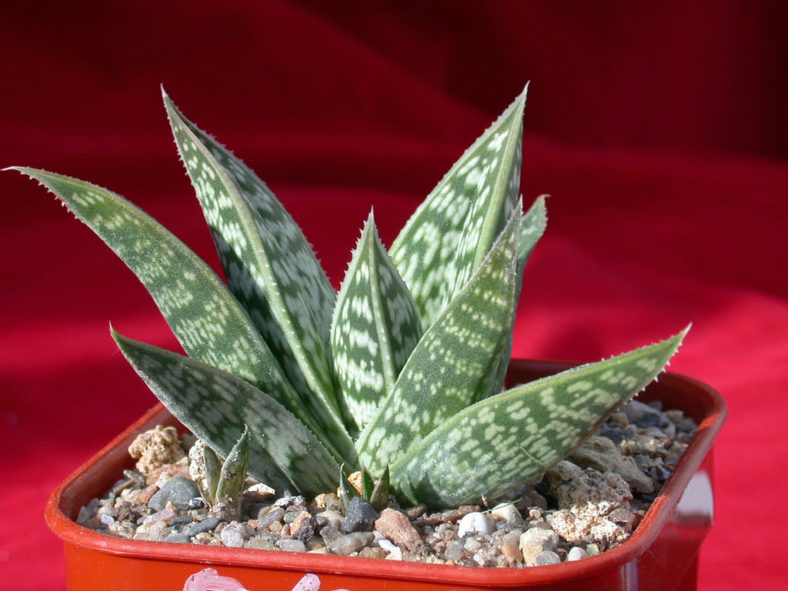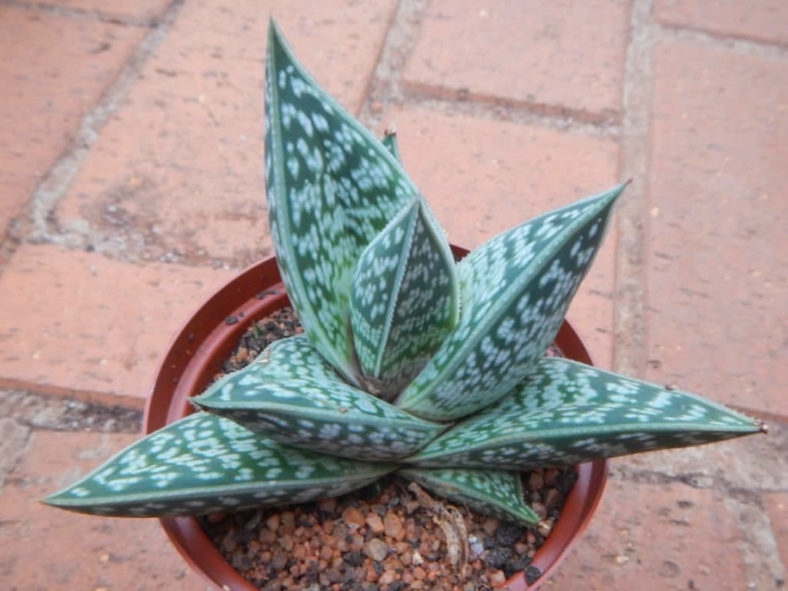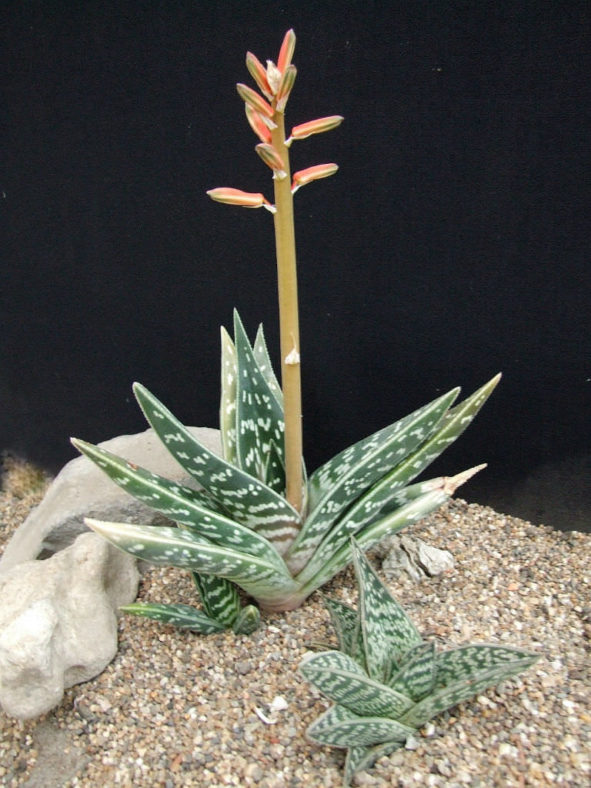Scientific Name
Gonialoe sladeniana (Pole-Evans) Boatwr. & J.C.Manning
Common Name(s)
West African Aloe
Synonym(s)
Aloe carowii, Aloe sladeniana, Tulista sladeniana
Scientific Classification
Family: Asphodelaceae
Subfamily: Asphodeloideae
Tribe: Aloeae
Genus: Gonialoe
Origin
Gonialoe sladeniana is native to Namibia. It usually grows on decomposed granites in the mountains of the western escarpment in west-central Namibia.
Description
Gonialoe sladeniana, formerly known as Aloe sladeniana, is a small succulent that forms stemless rosettes of deep green to gray-green, triangular leaves covered in linear white blotches. It can grow up to 6 inches (15 cm) tall and produces suckers that offshoot from the root, eventually forming a dense clump. The leaves are ascending, deeply keeled, and slightly folded lengthwise, with white cartilaginous margins and keel. They can measure up to 3.6 inches (9 cm) long and 1.6 inches (4 cm) wide.
In spring and summer, the plant produces small, sparse, pale to dull pink flowers on slender, usually simple inflorescences that can grow up to 20 inches (50 cm) long.

Hardiness
USDA hardiness zones 9b to 11b: from 25 °F (−3.9 °C) to 50 °F (+10 °C).
How to Grow and Care
Aloes are very forgiving plants. However, as with all succulents, Aloe must never be allowed to sit in stagnant water, and the plant should be carefully monitored to watch for signs of overwatering.
Aloes are not particularly fast-growing and will only rarely need repotting. Repot plants in the spring that are tipping over their pots or have ceased growing. Use a fast-draining potting mix with one-third sand or pebbles. When repotting a larger plant, dividing the root ball is possible. Some kinds of Aloe will send off off-sets that can be potted independently.
It needs intense, bright light. Once acclimated, it can withstand full summer sun. In the winter, provide bright light. It prefers warmer temperatures of 70 to 80 °F (21 to 27 °C) but will survive down to 40 °F (4.5 °C). Feed with a cactus fertilizer in the summer only. Suspend feeding in the winter as the plant goes dormant.
See more at How to Grow and Care for Aloe.
Links
- Back to genus Gonialoe
- Succupedia: Browse succulents by Scientific Name, Common Name, Genus, Family, USDA Hardiness Zone, Origin, or cacti by Genus
Photo Gallery
Click on a photo to see a larger version.


